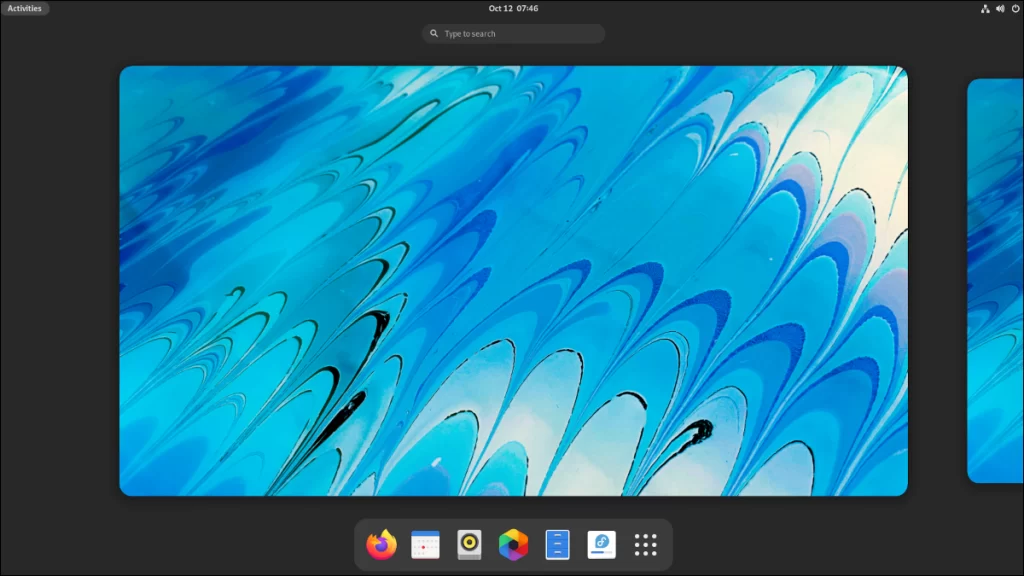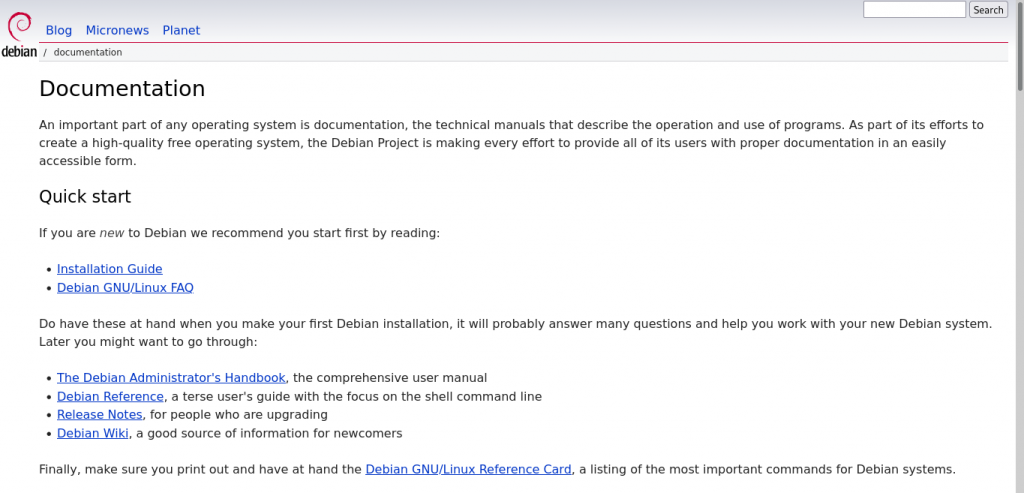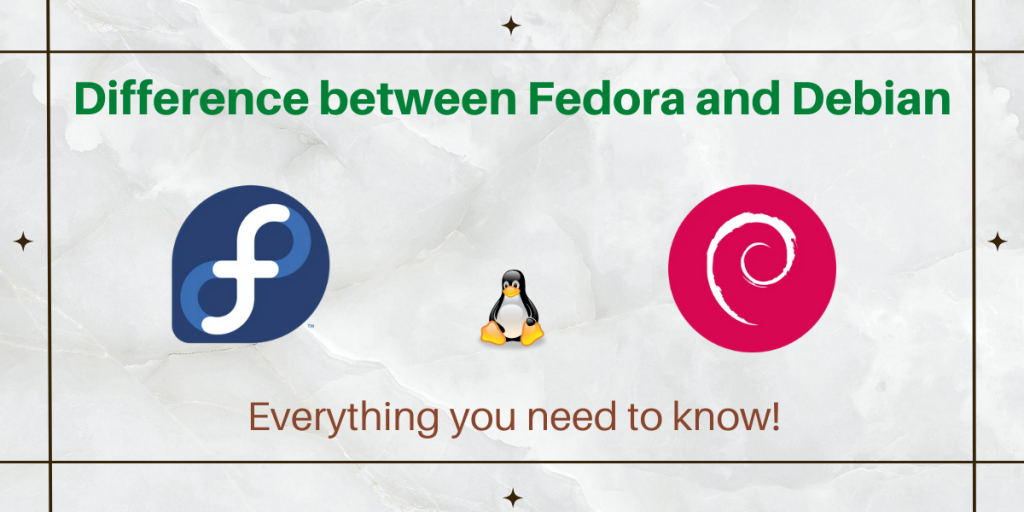Difference between Fedora and Debian. Which Linux Distribution Is Right for You?
Difference between Debian and Fedora across various aspects, including release cycles, software support, hardware compatibility, and more. The following are the key differences between Fedora and Debian
Debian is considered the most stable Linux distribution of all time, and it is the go-to choice of intermediate-level users or people who want to create a server out of their old PC or laptop. That being said, it can also be used as a desktop Operating System. Debian’s extensive repository provides access to a wide range of software supported by its Advanced Package Tool (APT) and it is a Reliable and stable OS.
APT is a robust package manager in Debian, capable of managing software installations, updates, and dependencies with ease. One of Debian’s strengths lies in its wide range of desktop environment choices.
During the installation process, users are presented with the option to select their preferred desktop environment from an extensive list, which includes GNOME, KDE Plasma, Xfce, LXDE, and more. Debian provides several repositories inline, which contain packages, and it contains non-free software and Open source free software. They usually have a more relaxed patent policy.
Fedora, on the other hand, is designed as an ‘upstream’ or, in layman’s terms, a testing ground for Red Hat as it is sponsored officially by Red Hat Enterprise Linux (RHEL), and therefore, it is designed to be up-to-date with all the latest packages and software. Fedora Linux uses the RPM package management system, and it also supports Snap and Flatpak packages.
Fedora Workstation focuses on user requirement, which includes reliability, security, flexibility, and user-friendly. Fedora has various software programs that are open-source, licensed, and free. Fedora offers a very simple installation process with the GNOME desktop environment by default. In this article, we are going to compare both distributions and help you figure out which one you are going to pick.

| Comparison | Fedora | Debian |
| Release Cycle | ~6 months | 2 years |
| Software Support | Good | Excellent |
| Hardware Support | Only 64-bit systems | Can run on almost anything |
| Minimum RAM required | 1 GB (Recommended – 2 GB) | 1 GB (Recommended – 2 GB) |
| Minimum Processing power | 64-bit 1 GHz (2 is recommended) | 1 GHz |
| Package Manager | dnf & yum | apt & dpkg |
Release Cycle
Fedora is a rolling release distribution, that is, packages and software programs are updated regularly and roughly every 6 months, a version update is released. For Debian, however, a new version is released roughly every two years, and therefore most of the packages are out of date.
But this drawback is also a boon to many because people don’t have to bother updating their Operating System for a long time. The developers test each and every package, and they only allow the stable packages to be in the latest release, making it optimal for servers. Don’t worry, you still can get the latest software packages once you add the PPAs of the respective programs from their official site.
Note: Adding PPAs from unofficial sources can be dangerous as someone can install unwanted software programs on your PC. Only add PPA repositories from trusted sources.
Software Support and Updates
The availability of software packages is essential when choosing Linux distribution. In this section, we will explore the diverse software ecosystems of both Fedora and Debian, showcasing the app stores and package managers that empower users to access a vast array of applications.
RPM Fusion is a prominent third-party repositories for Fedora users as it aims to provide additional software packages which are not available in the official Fedora repositories due to licensing or legal restrictions. While Similar to Fedora’s RPM Fusion, Debian also benefits from the third-party repositories that supplement official Debian repositories with additional software.
If you wish to install a 3rd party application on Debian that is not listed in the official repositories, you either have to add the PPA of that software manufacturer, or they provide a .deb package of their application. Similarly, if you want to install a 3rd party application on Fedora that is not in the official repositories, you either add a new repository or install a .rpm package of that software. However, many companies offer .deb packages rather than .rpm packages of their software, so please check if the software programs you are going to use have .deb or .rpm packages.
Hardware Support
Debian supports most of the hardware out there. It supports multiple architectures and processors, whereas Fedora dropped support for 32-bit CPUs a while ago, but other than that, their hardware support is excellent, too. Fedora, by default, does not ship with proprietary drivers, and that can cause problems for some people. You May Need Excellent Hardware Support If you have the latest hardware and require super compatibility, Fedora’s frequent Linux kernel updates and up-to-date drivers ensure a smooth experience. However, they can be easily enabled and installed at the time of installation or anytime later.
Fedora vs Debian Minimum Requirements
Debian and Fedora both require 1 GB RAM (but 2 GB is recommended). The minimum processor requirement for Debian is 1GHz dual-core processor, whereas, for Fedora, it is a 64-bit 1 GHz processor, although a 2 GHz processor is recommended.
Difference between Fedora and Debian for Ease of Use
Debian’s official download page might confuse beginners as it has a lot of different ISOs for different architectures. However, they have simplified the installation a little by providing an online Installer, which is servers and personal devices used. Fedora Workstation, however, is very easy to install and use.
Documentation and Support
Both the distributions have excellent comprehensive documentation as Debian is developed by the community itself whereas Fedora is developed by the tech giant Red Hat. Any bugs are patched via updates, but you do not get any tech support for both of these distributions, you will have to fix the problems by yourself by reading the documentation.

Conclusion
The choice between Fedora and Debian comes down to your specific needs and preferences as a Linux user. So there is no ‘Best Linux Distribution’. Fedora and Debian stand out as two of the most influential and respected distributions in the Linux ecosystem. Everyone has a different taste, and therefore, everyone prefers a different Linux Distribution. We hope you have figured out which distribution to pick for your Server/Personal Computer by analyzing all the data points mentioned above. If you prioritize stability and reliability and want a wider range of desktop environment options, Fedora may be a better choice. Debian may be the better choice. What do you prefer? A bleeding Edge distribution with all the latest features and components, or a stable distribution that you have to update and maintain rarely?
